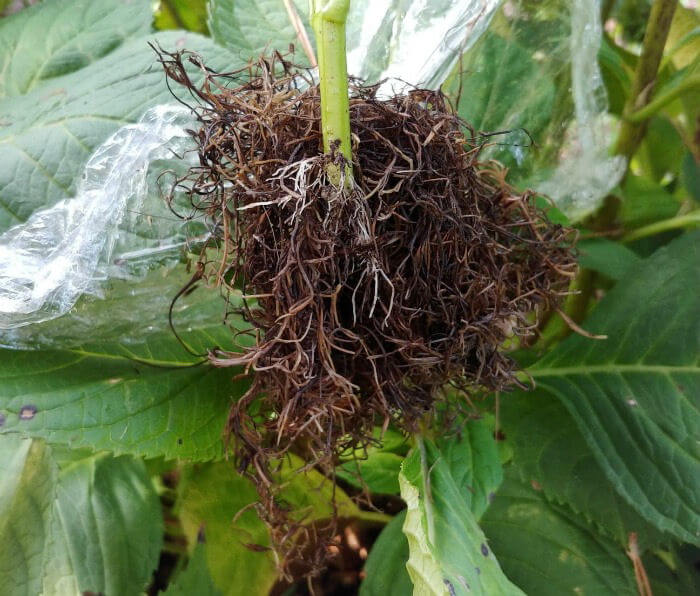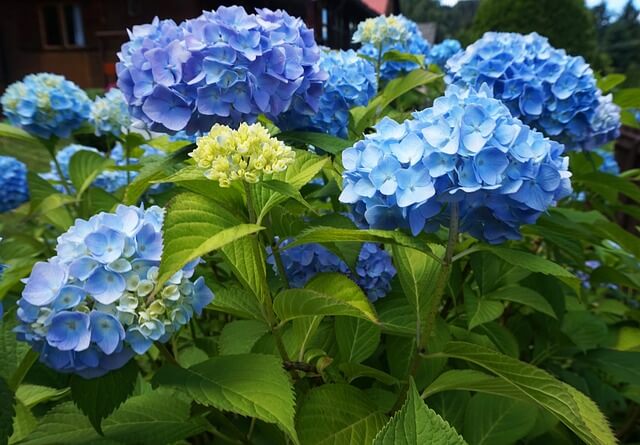Hydrangeas are one of my favorite groundcovers because of their potential to make stunning landscape accents.
They are also very easy to maintain…you don’t need special tools or gardening knowhow to grow Hydrangeas!
However, I have noticed many homeowners asking whether Hydrangeas can be planted near septic tanks.
And indeed there seem to be some concern about the impacts their roots can have on the underground pipes.
So I thought it would be a great idea to do a post that would help get to the root of the problem (pun intended).
Will your septic tank be at risk as result of nearby Hydrangeas spreading underground?
Basics of Gardening around the Septic Tank or Drain Field

In a drain field or around your septic tank, there are a series of underground perforated pipes laid in gravel trenches to allow the septic tank to soak away effluents.
As the effluents seeps into the ground, it gets purified by the soil by the help of useful bacteria which breaks down potential pollutants and eliminate excess nitrogen and phosphorus.
Plant roots over the drain field or around the septic tank can remove excess moisture and nutrients, helping the soil to deal efficiently with remaining pollutants.
But roots that can interfere with the underground pipes will damage or disrupt the septic system.
The answer to drain field gardening, therefore, is to grow plants that will meet your landscaping needs but not clog your underground pipes.
Generally, shallow rooted herbaceous plants often fits this description.
Ornamental grasses also work perfect—their shallow root systems are less likely to cause damage to your septic system.
What about Hydrangeas? Are they likely to disrupt your septic system if you grow them near your septic tank or drain field?
Well, the most important consideration to establish whether or not Hydrangeas can be grown near your drain field is their root system.
So, what kind of roots do Hydrangeas have?
Hydrangeas Roots

The vigorous growth of Hydrangeas’ stems often make many people to assume that these plants possess deep and stubborn root systems.
On the contrary, Hydrangeas are surprisingly shallow. They don’t have central taps roots like other shrubs but grow in loose, spreading mass of fibers (also referred to as root balls).
Most of Hydrangeas roots tend to stay within the top 6 inches of the soil.
While their slender and shallow roots may not penetrate deep into the soil, they are known to spread quite widely—they can each up to 10 feet depending on the species and growing conditions.
Can Hydrangeas Damage Your Drain Field Pipes?

Based on the type of roots that Hydrangeas have, the short answer is: NO, Hydrangeas roots won’t cause significant damage to your underground septic system pipes.
The concrete pipes or PVC tubes (which are commonly used in today’s septic systems) are pretty much impenetrable to the slender roots of Hydrangeas.
The only instances when the roots of Hydrangeas are likely to cause troubles for underground pipes is when the pipes are already compromised.
If the pipes are damaged or leaking for other reasons, then the Hydrangeas are likely to invade them considering that any plant’s roots will try to extend towards a steady source of water.
But on its own, Hydrangeas are less likely to force their way into uncompromised pipes.
Potential Issues
While planting Hydrangeas near a septic tank is okay, there is a caveat—growing them too close can potentially cause some problems:
As I pointed earlier, Hydrangeas roots can spread quite widely (up to 3 times its canopy width).
This means that over time, Hydrangeas roots are likely to disrupt the soil structure around your septic, leading to soil compaction and drainage issues.
Compacted soil can make it harder for the effluent to seep out of the pipes and into the surrounding soil, which can result in the drain field becoming clogged and failing to function properly.
Planting hydrangeas too close to a septic system can also make it harder to access and maintain the system.
If the plant is too close, it may obstruct access to the tank or drain field, making it harder for your or your technicians to perform routine maintenance or repairs.
Finally, planting a hydrangea too close to a septic system can interfere with their overall health.
See, Hydrangeas require a slightly acidic soil pH, which can be affected by the effluent from the septic system.
If the soil pH becomes too alkaline, the hydrangeas may struggle to absorb essential nutrients, resulting in stunted growth and yellowing leaves.
Best Practices to Remember When You Plant Hydrangeas near Septic Tank

Since Hydrangeas are susceptible to drought (due to their shallow root system), you may tempted to water and feed them with a wide of range of flowering fertilizers from time to time.
However, when it comes to the health of your septic system, these are practices that you may want to avoid because they are likely to disrupt the optimal functioning of your septic system.
Additionally, never let the ground get too soggy since Hydrangeas don’t like wet feet. In other words, a saturated drain field is no-no for Hydrangeas.
Finally, Hydrangeas tend to do best with at least 3 feet of space between them or from other obstacles and plants. Taller species may need more space—up to 10 feet.
If Hydrangeas are too close to other plants or objects, they may not get enough air circulation and/or sunlight. They may also be more prone to pests and diseases.
Recommended for You:
Is It Okay To Plant Pine Trees Near Septic Drain Field?
